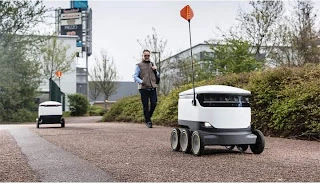Closed Ecological Systems For Future Protection
{tocify} $title={ARTICLE INDEXING}
Closed ecological system refers to an ecosystem or ecosystem that does not require any external matter to function and function. Waste products of one species or plant in this ecosystem are used by another species.
The main purpose of this ecosystem is to sustain and protect life, isolated and bound by the surrounding environment. So it is very important to convert waste material into necessary material.
For example, this system converts excrement or carbon dioxide back into water, food, and oxygen.
Closed ecological systems require at least one autotrophic organism to function. An autotrophic organism is an organism that takes simple elements from its surroundings and turns them into complex organic compounds.
Therefore, in the ecosystem, autotrophic organisms are known as ‘primary producers’. This is usually done by photosynthesis or photosynthesis and chemosynthesis.
Why Closed Ecological System?
The main reason behind the creation of closed ecological systems so far is to keep the process of life alive during space travel, in the space center or in a new habitat in space. In the near future, closed ecological systems will be useful to those who work in the aerospace industry or those who are engaged in environmental and space scientific work.
It is basically evolving into a biological way of life in space. However, in the future, there is a possibility of using this technology in the soil of the world.
For example, in the event of a disaster on Earth, it may be possible to use this method to arrange life on the moon or Mars. Again, if the Earth’s atmosphere worsens and life becomes harder to sustain, humans will be able to survive by using closed ecological systems.
Different types of closed ecological systems
Closed ecological systems can be varied. Some systems are formed naturally, while others are man-made.
Below are some examples of closed ecological systems:
• Ecosphere: The closed ecological system created for an entire planet is called the ecosphere. For example, the Earth’s biosphere, or territorial biosphere, is a kind of closed ecological system. This is an example of a natural closed ecological system.
• Man-made closed ecological systems: When we talk about closed ecological systems, we are usually talking about small and man-made systems. These systems are usually designed to sustain human life.
• Aquarium and Bottle Garden Ecosphere: These are two more man-made ecosystems. These ecological systems, made in a limited range, are available for purchase. Again, this system can be made by using closed or partially closed glass jars. In such closed ecological systems small plants, pebbles, shrimps or different types of marine corals and algae can be raised.
The main challenge in creating closed ecological systems
Scientists are still facing many challenges in successfully creating closed ecological systems. One of the challenges is to keep an eye on each animal or creature. Because they all have their own way of life. And everyone’s method is different than others. Whether a biosphere will survive in the long run depends on realizing these differences and providing the necessary nutrients for all living things.
Another important task is to capture and store data during research. This is because for long-term success in such projects, researchers need to focus on plant or animal growth, vapor content, energy content and air content.
However, the main challenge is to create an ecosystem that will help sustain life in the long run. Scientists have achieved a lot in the short term. But it will still take a long time to find a permanent solution to sustain life or solve environmental problems in space. Scientists need money and time to do research on this. These two are the biggest obstacles to success.
Will Closed Ecological Systems Change the Future?
Scientists have come a long way in understanding the Earth’s biosphere and recreating it using closed ecological systems.
Many scientific research teams have been successful in creating short-term closed ecological systems using their own methods. But they are still facing many challenges in developing it as a practical way to sustain life in the long run.
However, despite these challenges, some such projects are likely to succeed in the future. Although it is not possible to say exactly how long it will take to see the face of success. If scientists can achieve this long-term success, it could solve problems like environmental catastrophe on Earth. Again, there will be opportunities for life on either side of the moon, Mars or space.





Closed ecological systems or artificial biospheres are an integral part of the preparation process for further manned space exploration and interstellar human settlements. They are a way for us to better understand the wonder that is our own ecosystem and how it keeps all the elements needed for life in perfect harmony. Creating hospitable, self-supporting environments is imperative for our exploration into the cosmos.